Simply put, there is no more important skill in diving than good buoyancy control. However, many new divers realize shortly after becoming certified that they may not be completely confident in their ability to control their buoyancy underwater. Indeed, there are only a small number of skill exercises during the typical Open Water Course training that focus explicitly on buoyancy control. You may therefore even encounter a number of “experienced” divers who never learned this vital skill properly. So let’s start with the basics: what is buoyancy control, and why is it so important?
For a diver, buoyancy control is the ability to control your body, relative position, and depth underwater. Good buoyancy control allows you to maintain your intended depth without worrying about unknowingly sinking below or rising above that depth. This is known as being neutrally buoyant, the ultimate goal for any diver.
Many new divers can attest to how easy it can be to lose our orientation underwater if we aren’t paying attention. You may have even seen divers unknowingly float up to the surface in the middle of a dive! This can be very dangerous for a variety of reasons, including physiological risks of a rapid ascent and any passing boats overhead. On the opposite extreme, I have seen cases of even experienced divers who unwittingly sink well below their planned depths when there is not the bottom of the ocean to stop them. Good buoyancy control helps us avoid these dangerous problems.
Maintaining neutral buoyancy protects not only ourselves, but also the coral reef and underwater environment. The last thing we want to do is damage the ecosystem whose beauty is the very reason we have come diving in the first place. One errant fin kick could take out years of coral growth if we are not careful to control our buoyancy and maintain a safe distance from the reef.
Another benefit of having good buoyancy control is that we will expend less effort underwater. It helps us enjoy the dive more by maintaining a peaceful and relaxed state throughout. We not only feel more comfortable, but also we will use less air and be able to dive longer. In fact, for many divers who struggle with fast air consumption, oftentimes the biggest reason they burn through their air is unnecessary expended effort due to lack of buoyancy control.
I can easily attest to these issues, as I myself have had to overcome them. When I first started diving at age 16, I felt somewhat uncomfortable for my first 10 or 20 dives. I would struggle to control myself, constantly worried about bumping into the reef. Most of the time, I was that unlucky soul who ended the dive for everyone else because my air supply was low. These frustrations weighed heavily on me. However, once I truly grasped the theoretical basis of controlling buoyancy underwater and put the knowledge to practice, I quickly improved.
The Physics of Buoyancy
In order to understand how to improve our buoyancy, we must understand the theory behind it. In order to do that, let’s take a quick refresher on the basic physics of scuba diving and buoyancy.
When we jump into the water for a dive, the first thing we do is push the inflate button on our BCD. This will add air to our BCD so that we are floating at the surface. In this case, we say that we are positively buoyant. When we are ready to descend, we hold up the BCD hose and push the deflate button. Now the air rushes out of the BCD until we start to sink, making us negatively buoyant. It is worth the reminder here that this is also why we wear a weight belt when we dive – to be able to sink. If we didn’t, we would likely remain positively buoyant at the surface, unable to descend. Note that we should also exhale all the breath out of our lungs as we start to descend, a common oversight especially for newer divers. If you are wearing the proper amount of weight, descending will require this step (more on this later).
Once we start to sink, then what happens to our buoyancy? As you should have learned early in your dive training, the pressure around us increases the deeper we go underwater. For divers that means that as we sink deeper, we will become more negatively buoyant. In other words, we will start descending faster and faster as we reach greater depth. Why? The answer lies in the fact that we are generally wearing a wetsuit when we dive. There are tiny air bubbles within the neoprene fabric of the wetsuit that help provide thickness and warmth. When we are exposed to increasing pressure as we sink deeper, the air inside our wetsuit compresses, making it thinner and less buoyant. As a result, we will become more negatively buoyant as we sink deeper, all else being equal.
So what must we do to achieve our goal of being neutrally buoyant underwater, and stop ourselves from sinking uncontrollably? As you probably know already, we must add a little bit of air back into our BCD. This will provide positive buoyancy to counter-balance the increased negative buoyancy, theoretically making us neutral. If we go deeper, we may need to add a bit more air to the BCD to compensate for the increased pressure. On the other hand, when we go shallower or make our final ascent, we must let some air out of the BCD. Otherwise, we will float up uncontrollably because the air already in our BCD, along with our wetsuit, will expand under decreased pressure.
That is the physics of buoyancy in a nutshell. Easy then, right? Problem solved and good buoyancy control achieved? Well, not exactly. I knew all of this theory just fine by the time I completed my Open Water Course, yet my buoyancy control was poor, and I couldn’t figure out why. So with the theory out of the way, let’s get to the good part: tips for better buoyancy control.
Tips for Better Buoyancy Control
1. Pay attention to your breathing!
I will preface this point by stating very clearly that this is what I consider to be the most important factor in good buoyancy control. Ignoring my breathing was the main reason I didn’t have good buoyancy control as a new diver. But fortunately, once I started paying attention and being aware of my breathing, my buoyancy control got much better, and very quickly.
All of us have tried floating in a swimming pool before. When doing so, you may have noticed that you’ll float easier when you inhale a deep breath into your lungs. Your increased lung volume will provide positive buoyancy, keeping you above the water’s surface. Exhale and you will notice yourself start sinking below the surface. When we are diving, we can use our breathing in much the same way. In a state of neutral buoyancy, we will float up a little bit when we take in a deep breath of air. Conversely, when we breathe that air out we will sink down a little bit.
My mistake, the same mistake I have seen many divers make, is that I would always try to adjust my buoyancy through use of the inflate/deflate buttons on the BCD. If I felt myself floating up at all, I would quickly raise the hose to release some air. Then I would inevitably feel myself sinking more than I wanted, and quickly rush to add air back into the BCD. I was entirely ignoring the fact that the cause of these minor changes in my buoyancy was likely nothing more than my breathing!
In reality, a diver should rarely need to adjust the air in the BCD during a dive. It is especially necessary when we change depths drastically, including on the descent and ascent. It will also be necessary to compensate for increased buoyancy of the tank as it gets lighter on air during the dive. But besides those situations, we should rarely if ever need to touch the inflate/deflate buttons of our BCD while underwater.
Instead, we can really fine-tune our buoyancy by paying attention to our breathing. If we are approaching a coral that we want to go over top of, we can time our breathing to inhale deeply right before the moment we want to float up. Then, we can exhale deeply to come back down on the other side. Be careful not to hold your breath! We know from the most important rule in diving that we cannot do that for risk of lung expansion when ascending. But if you time your breathing the right way, you will be able to master buoyancy control with little to no effort involved.
Keep in mind that it usually takes a second or two after the breath for your body to react, so try to get a feel for the timing. With a little practice, the technique becomes so natural that you won’t even have to think about it. You will simply adjust your breathing naturally based on what you want your body to do underwater.
2. Use a proper amount of weight
We touched previously on the purpose of the weight belt, namely to make sure we sink when we let the air out of our BCD at the start of a dive. Does that mean you should strap on as much weight as you can find to make sure you will sink? Of course not. In reality, we should strive to use just the right amount of weight to allow us to sink below the surface with a deflated BCD, and no more. As we already reviewed, we will only become more and more negatively buoyant as we sink. So no more weight is necessary other than the amount that will get us under the surface to begin with (plus an extra tiny bit to compensate for the tank becoming lighter during the dive).
There are many divers, even experienced, who are constantly diving over-weighted. There are significant drawbacks to this. For one, you will have to add more air to your BCD to achieve neutral buoyancy at depth. This means that if you change depth even slightly after that, there is a lot of air inside the BCD that will expand or compress. Therefore, you will have to continue adjusting the BCD a lot more than if you were properly weighted. It also means that since you need to add more air to be neutrally buoyant, you will be bulkier underwater. As a result, you will need to use more energy to propel yourself during the dive, potentially consuming your air quicker. As most divers wear weights on their hips, overweighting has the added drawback of dragging down the lower half of your body, making it harder to maintain proper trim (body position) underwater.
How do we know how much weight is the proper amount? You should have done something during your Open Water Course called a buoyancy check to address this. During a buoyancy check, you float vertically and motionless at the surface, holding a normal breath of air in your lungs. Then you let all the air out of your BCD. If you are properly weighted, you should: 1) float at eye level, and 2) start to sink when you exhale the breath. That tells us exactly how much weight we need to descend, and no more.
Keep in mind that if you do a buoyancy check with a full tank, it will be necessary to add an extra kilo or two to compensate for the fact that the tank will become more buoyant as you use air during the dive. Otherwise, come time to make your safety stop at the end of the dive, you may find yourself starting to float up a bit. Also keep in mind, if you ever change diving conditions, diving equipment, or have been out of the water a long time, it is best to do another buoyancy check as your optimal weight may vary based on those factors.
3. Maintain proper trim
Trim refers to a diver’s body position. Underwater, our ideal trim as divers is that we are in a completely horizontal position with our arms stationary. That way, we can easily kick ourselves through the water maintaining constant depth.
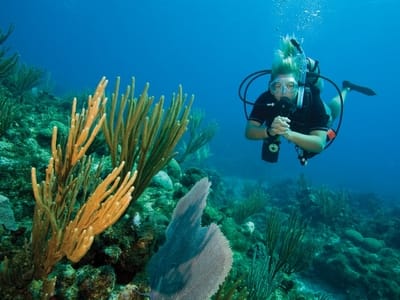
Oftentimes, I see divers whose legs are dragged down below the rest of their bodies. For some newer divers, this is because the horizontal position may feel unnatural at first. Or, it could be due to overweighting your belt, as I mentioned previously. Whatever the reason, the result of such bad trim is that we may kick the bottom, damaging the environment or impeding visibility by stirring up sand. Or, we may constantly kick ourselves up in depth, making it necessary to adjust buoyancy frequently throughout the dive.
If you are having issues maintaining proper trim, try redistributing some of your weight to your upper body. You can use the tank strap for this, either by threading a weight directly on to it or using specially designed weight pockets that clip to the tank strap. Many newer BCDs come with integrated weight pockets, which include upper body trim pockets exactly for this purpose.
4. Use visual references
It is important to use our visual references effectively to ensure we are aware of our position and surroundings. This way, we will notice slight changes in our depth, and be able to adjust our buoyancy before we float much above or sink much below our intended depth. An important visual reference to use is your dive guide and/or dive buddy. It can be easy to lose yourself in the beauty of your surroundings underwater. But you should be constantly aware of the divers around you as well. That is not only to keep the group organized and together, but also to notice if you unintentionally change depth in relation to the other divers. That way you can adjust your buoyancy before your depth changes even more drastically.
It is also useful to use natural visual references. For example, if you glance at the bottom every now and then, you will be able to know if you are floating up too much or sinking too close to the floor. If you are on a wall dive, use visual references on the wall to help maintain constant depth.
5. Notice your unnecessary movements
Most divers know that scuba diving should be a relaxing and peaceful experience. When we see divers underwater who are constantly flailing their arms or kicking chaotically, it is obvious that something is wrong. But do we notice these same tendencies in ourselves?
The first time I saw a video of myself underwater, I could not believe how much I was doing this without even realizing. These jerky movements in our arms and legs are futile attempts to correct bad buoyancy. In reality, we should never need to use our arms when we dive. Doing so is simply a waste of effort. Additionally, we should strive for gentle, relaxed, near-effortless kicking. Our fins are powerful enough that we should not need to do anything more than this. If we find ourselves wasting energy through unnecessary body movements, it is likely we need to revisit the previous points to correct the underlying issue of bad buoyancy control.
Final Thoughts
Good buoyancy control is the most important skill you can have as a diver. Easily maintaining neutral buoyancy will benefit your safety, comfort, and overall dive experience, not to mention the underwater environment. If you find yourself lacking confidence with this skill, the first step is to ensure you thoroughly understand the physics of buoyancy and diving. Then, work to put the preceding tips into practice, starting with paying more attention to your breathing underwater. With understanding and practice, everyone can improve their buoyancy control in a relatively short time. If you have any questions, comments, or clarifications, please feel free to leave a comment and we will address it!
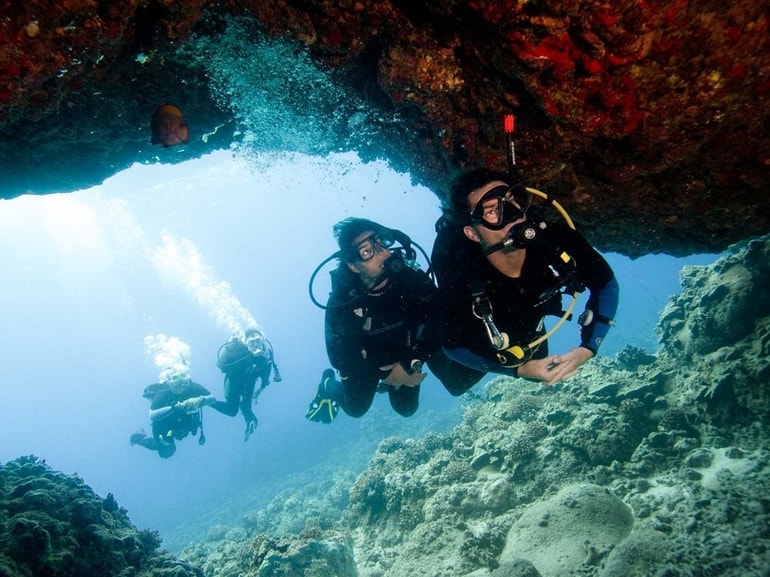
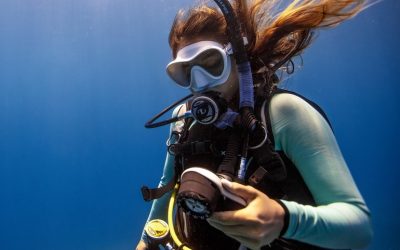
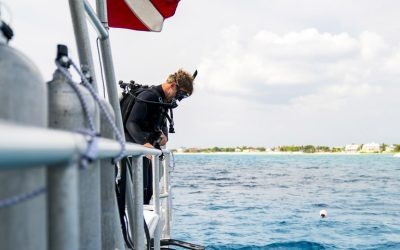
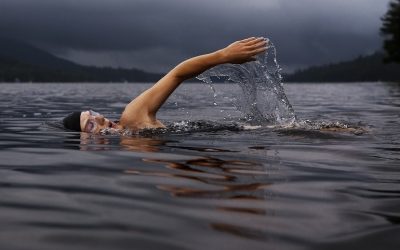
0 Comments